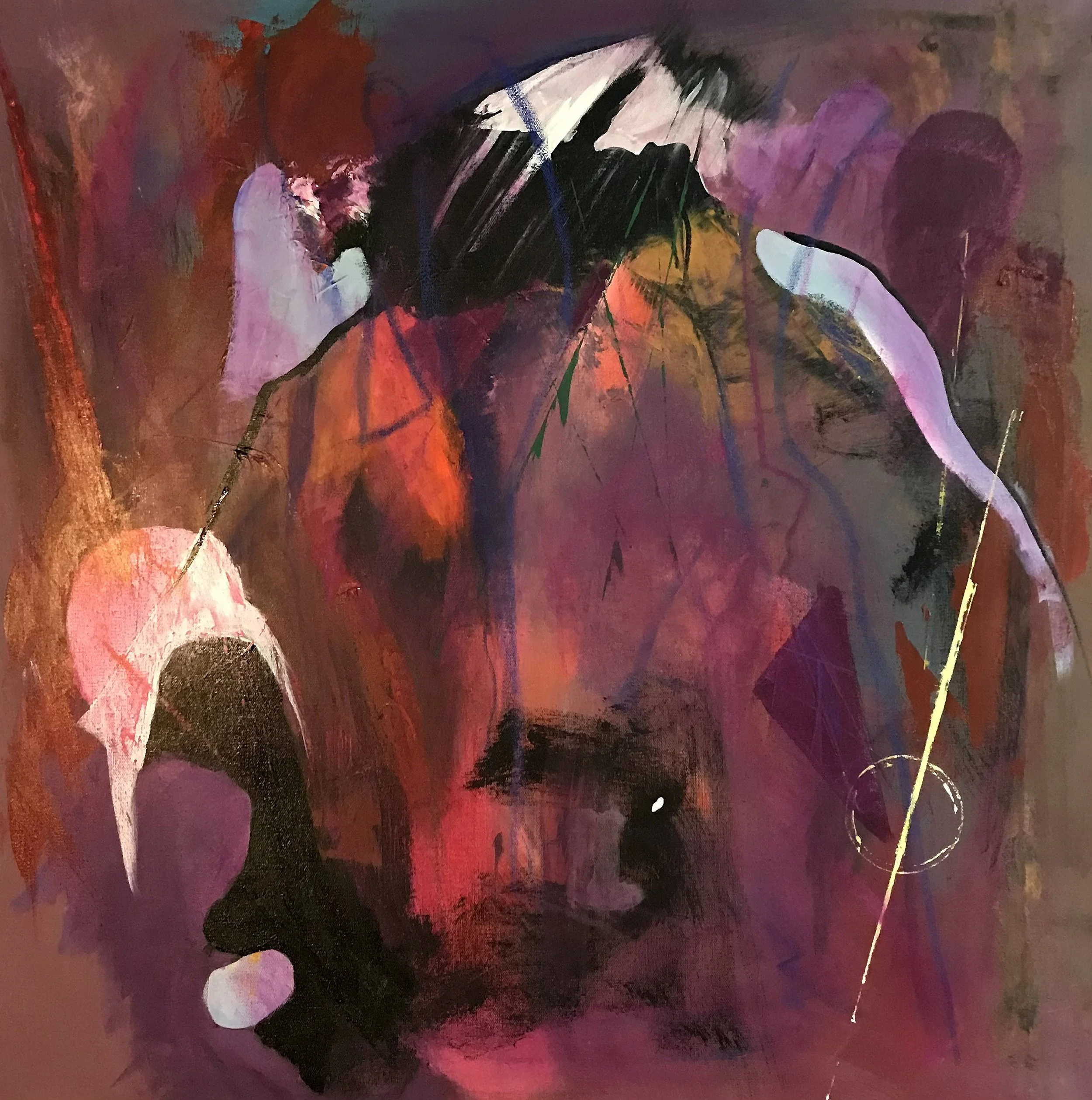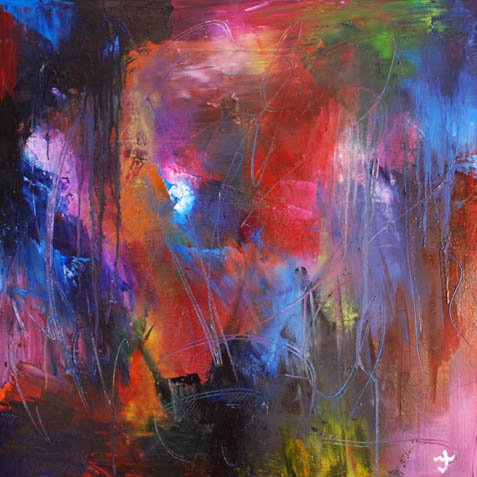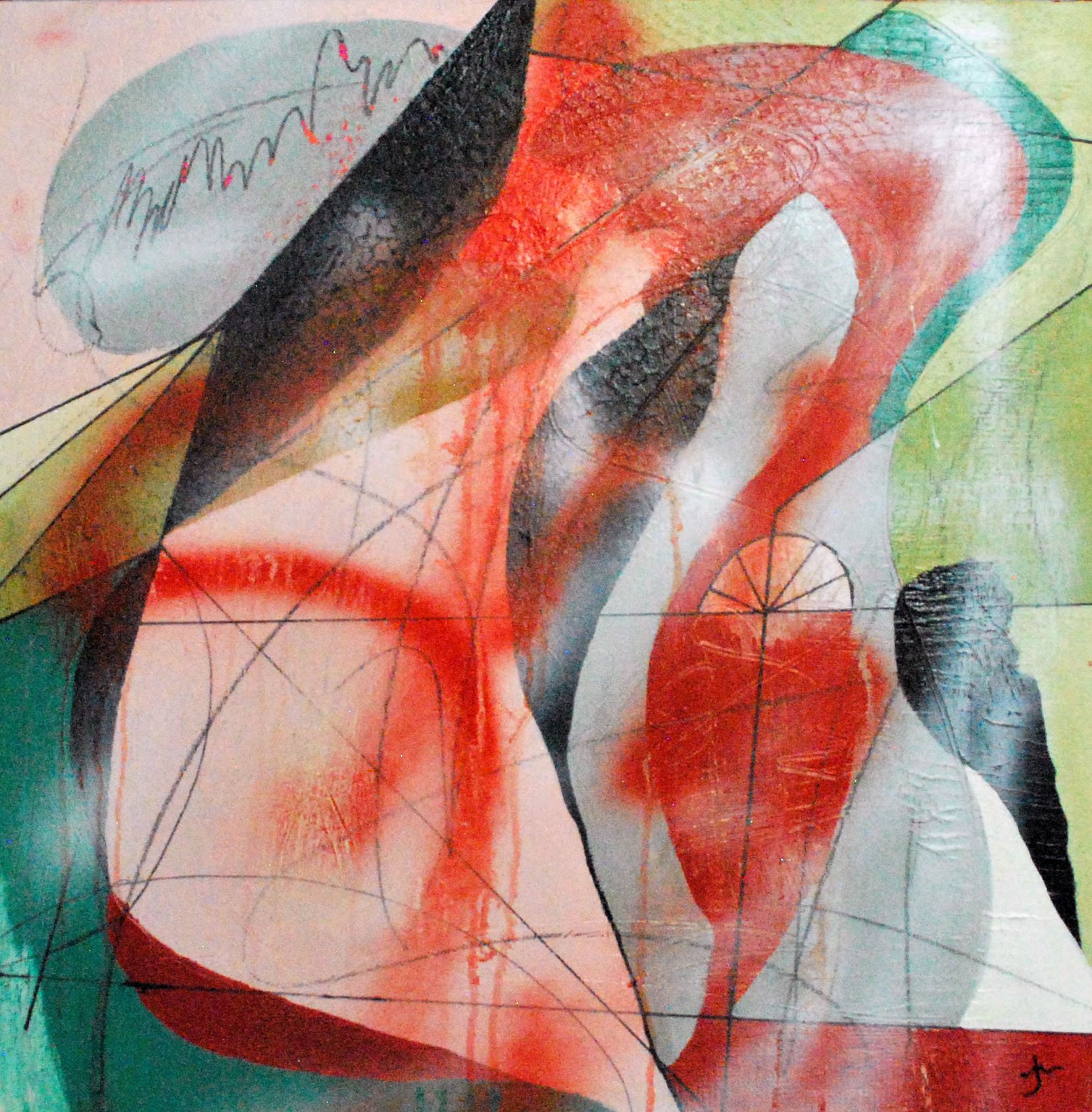Interview
Jerry Hardesty
Jerry Hardesty is originally from a small Kansas town. Unfortunately, visual art was not taught in public schools near him. So, his creative passion was expressed as a singer, and he received a BA in vocal performance. While teaching music, Jerry became a self-taught artist and progressed from representational and figurative work to abstract expressionism.
Later, a career in management stole his time needed for art, and it was after suffering from poor health that he became a full-time artist. He has honed his skills by participating in workshops and college classes, but still considers himself to be primarily self-taught.
What is your background and how did you start your journey in the art world?
“Like many artists, I developed a desire for drawing while in elementary school; unfortunately, my public school system did not offer art. I channeled my creativity into ‘singing..’ While in high school, I commuted to Kansas City, Missouri for voice lessons. On one of those trips, I visited the Nelson-Atkins Museum of art, and was awestruck by the breathtaking exhibitions. I went on to complete a degree in vocal performance and was obviously trained as a classical singer. Following my degree, I taught music in public schools. As a teacher, my passion for painting became overwhelming. I purchased a beginner oil set, and my first experience was on a table-top easel on the floor under a desk. My favorite subject at that time was the colorful make-up and costumes of clowns.
Fast forward several years into another career which robbed me of time to paint, I took it up again after having suffered and survived two heart attacks and two strokes. At that time, when I picked up brushes again, I was painting landscapes and other representational pieces. I got bored with painting the same trees and switched to abstract expressionism and I have not looked back.
Presently, in addition to painting, I produce and host a podcast, ‘The Artist's Voice’. Through this medium, I empower artists to share their stories and talk about their work. I have interviewed artists from many foreign countries and from many creative influences. To date, I have interviewed almost one-hundred artists.”
What themes do you pursue? Is there an underlying message in your work?
“Themes of exploration and experimentation are topnotch pursuits with an underlying message of self-reflection. Or perhaps I have that backwards. Maybe self-reflection leads me to explore and experiment. I am intrigued by lines and geometric shapes although my work is not about representational objects, but non-objective. I should add that I don't wait for inspiration, I just start.”
“How can I not say that I am inspired by music? The parallels between the improvisational approach to abstract expressionism and jazz are limitless. I love the raspy tones of a tenor sax as well as the virtuosity of jazz piano. Of course, I cannot omit the rhythmic beat of the supporting percussion. Contemporary jazz accompanies me in the studio.”
What would you say inspires you most?
“Creativity itself is inspiring. Spontaneity is inspiring. I love mark-making which leads into the unknown, the adjacent possible. Each mark or brushstroke on the canvas informs the next which I find inspiring.
Color is exciting! Discovering new materials and new tools is equally exciting. Wandering the aisles of home supply or kitchen supply stores, and discovering a new tool for mark-making motivates me to quickly return to the studio and experiment.”
How would you describe your work?
“Colorful, gestural, lyrical, it's been described as visual poetry. Non-objective; in fact, my request to viewers is, ‘Please do not look for images in my work. If there are any, it's unintentional.’”
Which artists influence you most?
“Contemporary artists. Because I interview so many artists on my podcast, I have a number of favorites that I have interviewed. I have to say almost all of my favorites are abstract expressionists. I wish I could have interviewed Jean Michael Basquiat. Others from the past include Franz Kline, Keith Haring, Howard Hodgkin, Joan Miro and deKooning.
Contemporaries I would like to interview are Udo Noger, Gerhard Richter, James Leonard, Jose Parla and Mark Bradford. Ones that have been my guests on ‘The Artist's Voice’ have included Dr. Desiree Cox, Bo Bartlett, JM Rizzi, Stefan Fiederowicz, Tucker Eason, Marcus Aitken, and Daniel Diaz to name a few.”
What is your creative process like?
“To activate a blank canvas, I begin making marks with pastel oil sticks, oil sticks, acrylic paint, ink, pencils and/or markers. I then respond to those marks by adding paint (acrylic or oil). I may move that paint around with compressed air or various tools. I sometimes add mixed media such as marble dust or crushed walnut shells. I enjoy pressing paper towels into the wet paint to blend colors together. Lately, I have used saran wrap over the wet paint to move it around and get special effects. Essentially, I keep layering to achieve depth and interest until I am somewhat satisfied.”
“I do not consider a piece finished until I can give it a title and would be proud to hang it on my own wall. That being said, after living with a painting for a period of time, I may go back into it and change it completely or completely paint over the whole thing. At that time, I usually give it a different title.”
What is an artist’s role in society and how do you see that evolving?
“Today, many artists are distracted by the political climate in which they live and work. They are bold and unafraid to say ‘fuck you’ in their work, even going so far as to include that text in the body of their work. I admire those artists for their courage. Being a representative of my senior status, I do not believe that viewers would appreciate that from me even though I may be opinionated, especially when it comes to politics. That being said, artists should be focused on creating art that causes viewers to question themselves - art that raises questions for viewers and pulls them into not only the beauty of it, but the artist's purpose.
A recent sale to one of my collectors is called ‘Desiderata’. I was creating this piece in a public area and a young lady came into my space and we engaged in conversation. She was obviously trying to make a statement by her appearance as she was definitely Goth. One of the tattoos on her forearm was the first few lines of ‘Desiderata’, hence the title of the piece: ‘Go placidly amid the noise and haste, and remember what peace there may be in silence’. It may have gone further but I don't remember. The point is I included the title of that poem in the body of the work. It was a dark piece, but certainly related to the young lady who inspired it.”
Have you had any noteworthy exhibitions you'd like to share?
“I was accepted into a show in Chicago that was curated by Artist/Curator Sergio Gomez. Personally, I have curated two virtual exhibitions, one of my own work and one of a number of artists who had been my guests on ‘The Artist's Voice’ podcast.”
Website: www.jerryhardestystudio.com
theartistsvoice.info (Podcast)
Instagram: @jerryhardestystudio
Other: Facebook








